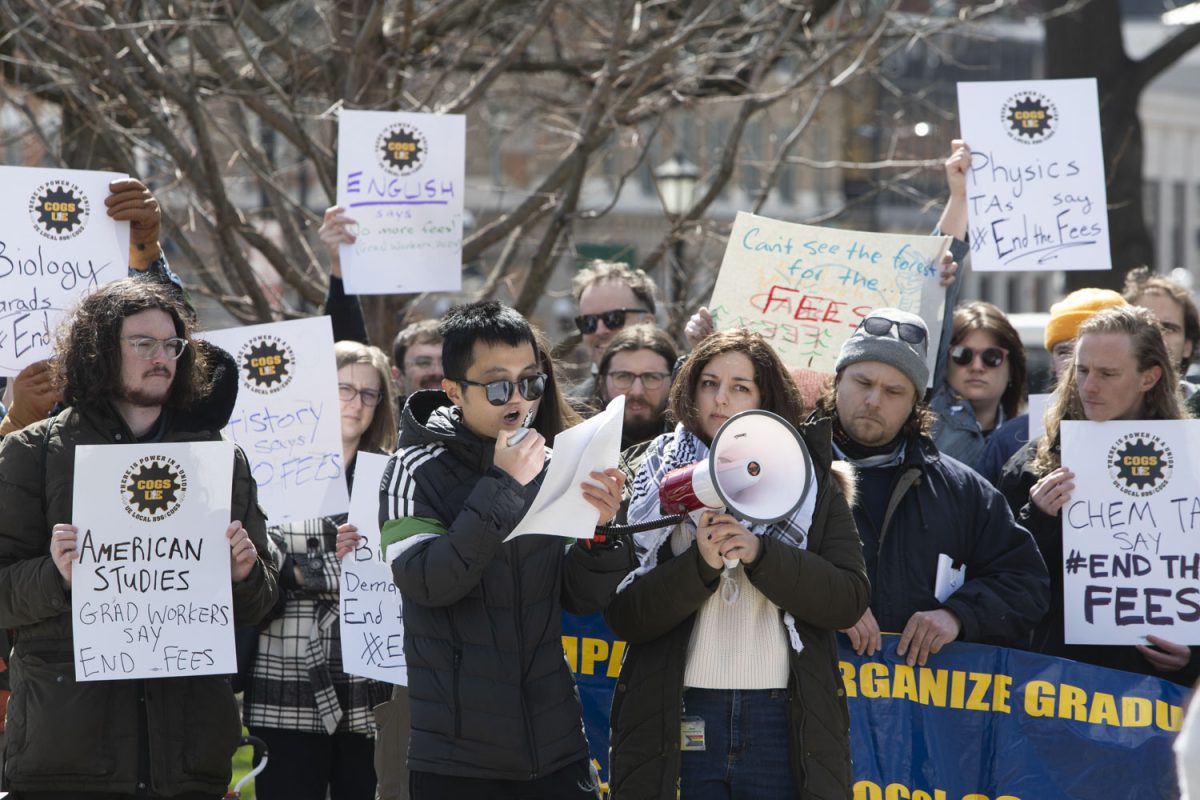Nichole Shaw
Iowa college students average $30,000 in student-loan debt, according to The Des Moines Register, and they’re positioned to tumble deeper into debt. The rise in university tuition and the dwindling support of state-government funding for higher education contributes to the amounting debt students have been swindled into. Countless students end up drowning in debt for the rest of their lives and consistently have the weight of student loans dragging behind them. It is ridiculous for financial institutions and colleges to expect young adults at the age of 17 and 18 to understand the full severity of what it means to take out student loans and pay interest.
Students in high school are told the only way they will achieve their dreams of having a successful career is to attend a four-year university at the minimum. However, nobody ever tells students that dream come at a cost that is often unattainable without taking out massive loans because of ever-increasing tuition rates. Inflating tuition rates leave families and individuals scrounging up every last penny they have in order to pay for their higher education.
RELATED: After delaying tuition vote for months, regents approve increases for Iowa’s university students
Sure, it’s mandatory at some public schools to take consumer economics, but classes such as those never go in-depth enough to unveil the dangerous claws that student loans have. How are 17-year-olds supposed to fully understand how serious taking out loans is while they’re worried about graduating from high school, getting a job, moving away from the only home they’ve ever known, and establishing a comfortable life at their new college? They’re not. They should focus on their schoolwork and furthering their education without a complicated and confusing trap of financial mazes, such as student loans, looming over every decision they make for their future.
According to a 2018 story by the Register, “In the past decade, average student-loan debt among the nation’s college graduates has swelled nearly 70 percent to about $34,000 … In Iowa, the student-debt load has grown at a slower but still alarming pace, rising 28 percent over the past decade to an average $29,800.” It is clear student debt is a problem in our nation, and Iowa is no exception. While the vast majority of past college students have paid off their student debt at a slow pace, future students face higher tuition. That indicates that future students will be forced to borrow even more money to graduate with their degrees. For the UI, this indication derives clearly from a 4 percent hike in tuition and an $11 million state Legislature budget cut that’s being split with Iowa State University. Funds for the university are vanishing, and students are expected to pay more to an institution that is known for its affordable and fair tuition.
It is my belief that students should not be able to take out student loans amounting more than $60,000 in four years, because College Board reports, “In 2017, 50 percent of the outstanding federal education loan debt is held by the 12 percent of borrowers owing $60,000 or more.” Therefore, an outstanding amount of financial borrowing like $60,000 is clearly too much for an individual to pay back. Furthermore, there should always be a repayment plan in place as well as a free class to students about what taking out a student loan entails. Students should never be forced to take out upwards of $60,000 in loans. The state and federal government should keep this from happening by increasing higher-education funding and awarding more federal grants to students from lower economic households. Education is usually the only hope these individuals have for a better future.









